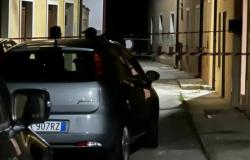
Giuseppe Mastrolorenzovolcanologist and leading researcher of the National Institute of Geophysics and Volcanology (INGV), regular guest on scientific television channels such as National Geographic and Discovery Channel, was interviewed by AreaNapoli on the topic of the possibility of building a sporting impact in Bagnoli, as announced by the president of Napoli, Aurelio De Laurentiis.
The first point is to establish the danger of the Campi Flegrei area: « It is a large caldera that can generate eruptions tens of times more powerful than Vesuvius, even the one that destroyed Pompeii, it would involve – according to the current emergency plan – around 500 thousand people but based on volcanological evidence and numerical simulations – mine and other experts – could affect the entire population residing in the metropolitan area of Naples. So, at least 3 million people”
If we really insisted on building a new stadium in the red zone, what would be the construction criteria to adopt?
«The structure, due to its characteristics, must certainly be anti-seismic, but in practice all the stadiums if well built are, being rings of reinforced concrete and steel, with great elasticity, but a facility in the Campi Flegrei should be built in such a way such that it is not affected by the cumulative effect of several thousand shocks over a long period of time. However, the fundamental problem is that a stadium still involves an increase in risk due to the concentration of tens of thousands of people, with all the consequences that can derive from it”
So, what would happen if a stadium was built in Bagnoli?
«In the event of the construction of a plant in Bagnoli, even if well built and capable of resisting bradyseismic phenomena, there would be a concentration of over 100 thousand people, a quantity equal to the inhabitants of the entire district of Bagnoli-Fuorigrotta, in the red zone of the Campi Flegrei, and in particular in the narrow one, due to the bradyseismic risk. Which is why, even if for a few hours a week, you double the population, as well as the number of vehicles parked and circulating, and therefore a danger would be created in the event of a seismic or volcanic emergency due to the possible hindrance to rescuers and possible evacuations . Among other things, it is also a “embedded” area with often congested traffic during rush hours and therefore difficult to evacuate, while Fuorigrotta is already outside the bradyseismic red zone and is immediately connected to the main road and motorway arteries. Furthermore, the right destination for the former Italsider area of Bagnoli is that of an urban park, which among other things could be useful as a waiting area to support civil protection activities to evacuate the population in the event of a crisis, also through the possible landing places found in that area and, then, building the stadium would be an obstruction to such activities”
Another factor could be panic in times of emergency, of course you yourself reported that well-built stadiums are able to resist earthquakes, but can panic cause great risks?
«For this reason, however, it is always advisable to ask for maximum calm during the tremors and any outflow, following the established evacuation procedures, in order to avoid overcrowding both in the stands and on the stairs and possible serious consequences. In essence, building a stadium in that neighborhood is certainly inadvisable”
The San Paolo Stadium (now Maradona) well withstood the disastrous earthquake of 1980 which, however, in the Neapolitan area manifested itself in a much less intense way than in the epicentral areas, as well as the entire bradyseismic crisis of the early 1980s.
«It withstood all the bradyseismic phases of that period. Furthermore, during the matches in which Maradona, Careca and their companions played, findings were made on the accelerations generated by the most intense phases of the spectators’ cheering in the stands, since many inhabitants of the neighborhood were frightened due to the repeated vibrations. Studies on microseismicity were conducted, highlighting that during away matches there was a particular seismic calm, while when playing in Naples a magnitude of up to 2 Richter degrees or higher was recorded, in particular in the Fuorigrotta area, with the epicenter stadium. This suggests that typhus generated stresses similar to an earthquake. This situation was obviously also found in the last championship”
Let’s get on board an ideal time machine and go back to the 1950s, in short before April 1952, the beginning of the work on “Maradona”. Would you have considered the construction of the stadium appropriate, based on the knowledge and volcanological data in your possession at the time?
«There was limited knowledge of the volcanic risk of the Campi Flegrei and, above all, that area was considered relatively outside the congested area of the city. Already during the fascist era, the Mostra d’Oltremare was built, including sporting and leisure activities, exhibitions and various events and it was believed to be a suitable place for the construction of the stadium. Today, in light of new knowledge, if another plant were to be built, it would be more prudent to build it for example north of Naples and the Campi Flegrei, in the Caserta area, in short, outside the high risk area. In the current situation, a stadium would not have been built in the middle of an urbanized area and in an area at volcanic and bradyseismic risk, which there is but it could be considered reasonable – as previously mentioned – to use the already existing stadium or a possible new facility outside the red zone”
Knowing that I am burdening you with this question, in your opinion is there an area… or rather, better if you can point me to more than one, in the area around Naples, other than Caserta, in which to build a new stadium?
«The evaluation is of an urban planning nature, but as far as I’m concerned, it should be built in sparsely populated areas and, above all, far from the caldera area, obviously to the north, at least twenty kilometers from Pozzuoli. For example – further, as I have communicated, in the Caserta plain – in the Acerrano, but it is included in the urban planning assessments. As regards volcanic risk, the suitable areas should be north of the caldera edge – as to the east there is the Neapolitan urban area and the Vesuvian red zone – essentially, in areas that do not present specific seismic and volcanic risks, if not those common to the entire Neapolitan area. Of course, earthquakes could occur in the Sannio Apennines, but there is not much that can be done about this, although a stadium, in general, does not suffer damage even in the event of strong tremors.
But a football arena in a less densely populated area would allow for safer evacuation of spectators. If, for example, Napoli had played at home that evening of 23 November 1980 (they were away to Bologna; ed.), the only risk factor would have been panic. Even if the stadiums can resist strong earthquakes, the Neapolitan area, obviously excluding Campi Flegrei and Vesuvius, is not considered a seismogenic zone for large earthquakes, therefore the accelerations produced by earthquakes are much less intense than in the epicentral Apennine areas”
In conclusion, from your personal point of view, is it better to have a reinforced “Maradona” or a new stadium in the areas you indicated to me?
«It depends on the economic resources available. The reinforcement of the Maradona stadium could be an acceptable solution, but considering that it is located in the red area, it would be prudent to also explore a future perspective that minimizes the risk. Since for the Campi Flegrei, unlike the Vesuvian area, a law on no building has been established, in theory no further construction should be done, but rather, at least in the long term, reduce the anthropic load and, above all, avoid other areas of excessive density of population”




